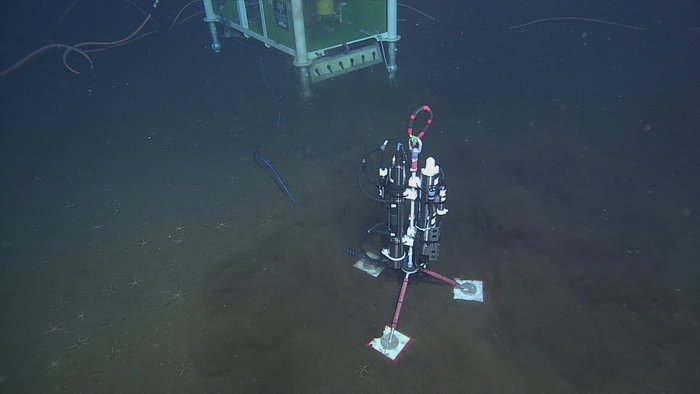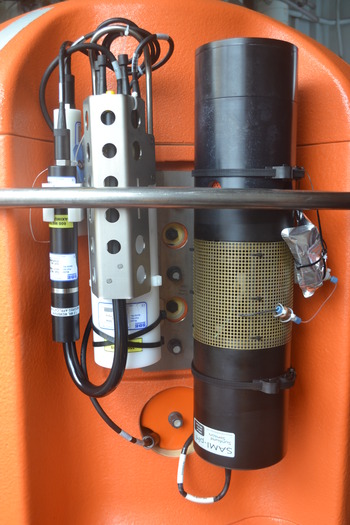A CTD is an instrument used to determine how conductivity (C) and temperature (T) measurements in the ocean vary relative to depth (D) and is a primary tool for measuring physical properties of the ocean. Salinity is determined from electrical conductivity and is a measurement of the concentration of salt and other inorganic compounds in seawater. Salinity and temperature are two of the most basic measurements used by ocean scientists. The CTD temperature and salinity measurements are both used to determine seawater density, which is a primary driving force for major ocean currents.
CTDs were installed at Axial Base, at the mooring (LJ03A), the 200m platform (PC03A), and the deep (DP03A) and shallow (SF03A) profilers, and the Slope Base vertical mooring (LJ01A), 200m platform (PC01A), and deep (DP01A) and shallow (SF01A) profilers. They also were installed at the Endurance offshore 600 m site on the 200m platform (PC01B), in the offshore benthic package (LJ01C), and in the deep (DP01B) and shallow (SF01B) profilers.
Instrument specifications: CTDs were supplied by Sea-Bird; the models are SBE 16plusV2 and SBE 52MP.




